Miami Art Museum. From May 24 through September 2, 2012.
 A major career retrospective of the work of José Bedia at Miami Art Museum (MAM) explores the influence of indigenous cultures and religions from Cuba, North and South America, and Africa on the artist’s work over the last three decades. Transcultural Pilgrim: Three Decades of Work by José Bedia, featuring 35 artworks including large-scale figurative paintings, installations and drawings, highlights the layering of spiritual, social and historical constructs in Bedia’s body of work – all of which are retold through a highly personal lens. The exhibition is the first to comprehensively examine the rich iconography of Bedia’s artistic output. Transcultural Pilgrim is among the last four exhibitions MAM will show in its current building, before making the transition to its new Herzog & de Meuron facility in Museum Park in fall 2013.
A major career retrospective of the work of José Bedia at Miami Art Museum (MAM) explores the influence of indigenous cultures and religions from Cuba, North and South America, and Africa on the artist’s work over the last three decades. Transcultural Pilgrim: Three Decades of Work by José Bedia, featuring 35 artworks including large-scale figurative paintings, installations and drawings, highlights the layering of spiritual, social and historical constructs in Bedia’s body of work – all of which are retold through a highly personal lens. The exhibition is the first to comprehensively examine the rich iconography of Bedia’s artistic output. Transcultural Pilgrim is among the last four exhibitions MAM will show in its current building, before making the transition to its new Herzog & de Meuron facility in Museum Park in fall 2013.
“The incredible melding of cultural ideas and symbols in José Bedia’s work has a special resonance in the distinctly diverse Miami community, where so many nationalities, races, heritages and religions come together and Bedia, himself, lives,” said Thom Collins, director of Miami Art Museum. “Transcultural Pilgrim reveals the unexpected parallels between the cultural practices of disparate communities from around the globe and, in doing so, creates new parallels to contemporary life – exemplifying MAM’s dedication to presenting artists and works to which our audiences will have strong connections.”
Bedia is an acclaimed member of Cuba’s “Generation of the ‘80s,” a group of pioneering young artists who incorporated Cuban vernacular and spiritual references into their work and experimented with eclectic visual forms. Throughout the last 30 years, Bedia has traveled to the Sonoran Desert in Mexico, North American Plains, Amazonian rain forest, Dominican countryside, and the Central African savanna, among numerous other locations, in search of artistic and spiritual peers and to participate in what he defines as “diverse spiritual worlds.” The featured works in Transcultural Pilgrim – with their sacred and autobiographical references, strong graphic quality, and philosophical complexity – represent the traces of Bedia’s artistic and spiritual journeys, which have shaped his artistic practice. The exhibition also includes select objects from Bedia’s personal collection, housed in his Miami home, which have inspired the forms and content of his work.
Organized by the Fowler Museum at UCLA and guest curated by Judith Bettelheim and co-curator Janet Catherine Berlo, Transcultural Pilgrim: Three Decades of Work by José Bedia unfolds as a narrative of Bedia’s pilgrimages around the globe.
The first section includes works that address Bedia’s involvement in the Afro-Cuban religion Palo Monte Mayombe – which he began practicing in the early 1980s in Cuba – as the foundation of his artistic practice. The central icon of the religion, the nganga or cauldron, is a recurring theme in his work. It is visible in Mama quiere menga, 1988, which depicts Bedia’s torso in a brilliant red, showing the sacred marks of religious initiation and an empty nganga – which as it is filled represents the initiate’s growing power.
The works in the next section address Bedia’s travels in Mexico, his studies with the Lakota peoples in North America, and visits to shamans in the Peruvian Amazon. They fuse his cultural experiences and reveal religious parallels in the contemporary world. The large painting Tunkashila, 1995, depicts a central figure as a personified mountain, which holds in its hands an Edward Curtis photograph of a Plains Indian man, holding in his hands an eagle that will be used for ceremonial purposes. Bedia frequently uses such collaged historical photographs to add layers of meaning to his works.
Another grouping pays homage to Caribbean revolutionary figures who combined their religious beliefs with a strong sense of social justice and activism. In this series, Bedia also uses reproductions of early photographs and reanimates them by contextualizing them in his work. One portrait entitled Andrés Facundo Cristo de los Dolores Petit, 2002, depicts Petit, a mid-19th century leader who established integrated houses of Afro-Cuban religions, with a full nganga – a representation of the centrality of Palo Monte to his practice.
The final grouping focuses on Bedia’s long-standing interest in African art and his pilgrimages to Zambia. It includes large-scale, almost 15-foot-wide, brightly-colored paintings, such as Utenu Kazaye and Mupala, both from 2007, which reference specific Chokwe masquerades from Zambia.
The exhibition will also include three “Moments of Inspiration,” displays of selections of objects from Bedia’s vast personal collections, which include sculptures, textiles and drawings, principally from Africa and the indigenous Americas.
“José Bedia’s work has a distinct anthropological quality and is imbued with his rich experience of diverse cultures, religions and histories,” said Tobias Ostrander, chief curator at Miami Art Museum. “It expresses the connections between the physical and spiritual worlds, natural and man-made, as well as rituals created across time, region and culture in a deeply personal and, yet, openly accessible manner that draws the viewer into his world.”
José Bedia was born in January 1959, the same month and year that Fidel Castro marched into Havana. He graduated from the Instituto Superior de Arte and was included in the groundbreaking Havana Biennials of the 1980s. He was selected for the exhibition Magiciens de la terre, held at the Centre Georges Pompidou in Paris in 1989 and in 1991 moved to Mexico. In 1993, he immigrated to the United States. He presently lives and works in Miami.
Bedia’s major projects include an invitational installation concurrent with the Saõ Paulo Biennial and a travelling retrospective organized by the Institute of Contemporary Art, University of Pennsylvania in Philadelphia, both in 1994; and exhibitions at the Museo de Arte Contemporáneo in Monterrey, Mexico, and Site Santa Fe in New Mexico in 1997; and a major solo exhibition at the Museo de Badajoz, Spain, in 2004. In spring 2011, the Centro Atlántico de Arte Moderno in Las Palmas, Canary Islands, mounted a retrospective exhibition of Bedia’s installations.
Bedia’s work is in the collections of the Los Angeles County Museum of Art; Museum of Contemporary Art, Los Angeles; Museum of Modern Art, New York; the Whitney Museum of American Art; the Guggenheim Museum; and the Miami Art Museum, among others.
Miami Art Museum
101 West Flagler Street
Miami, Florida 33130
305.375.3000
www.miamiartmuseum.org

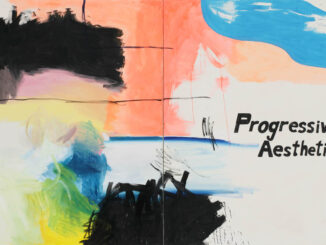
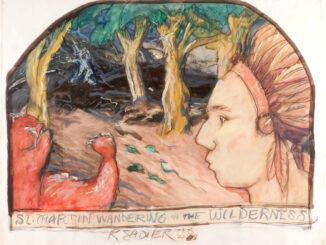
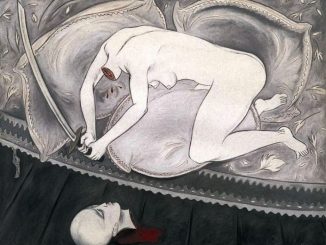
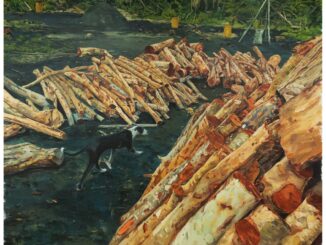

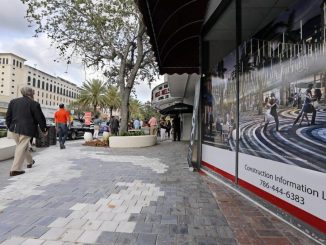
Be the first to comment